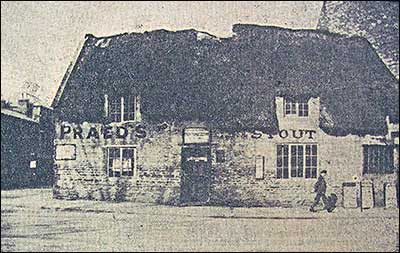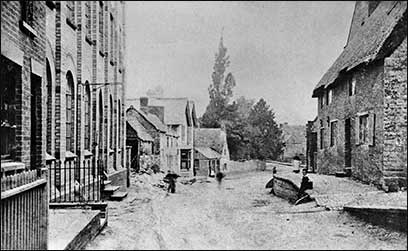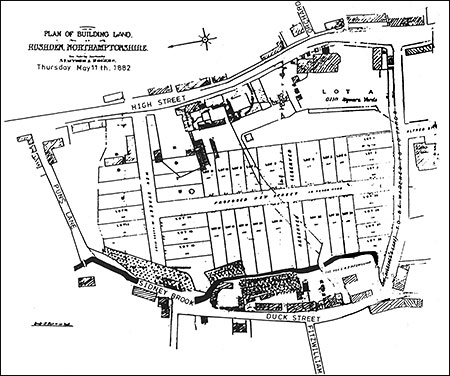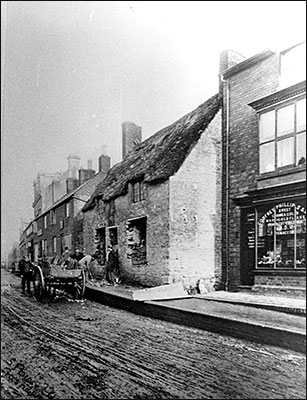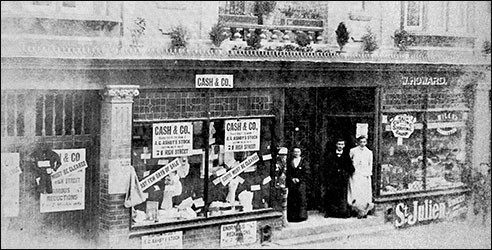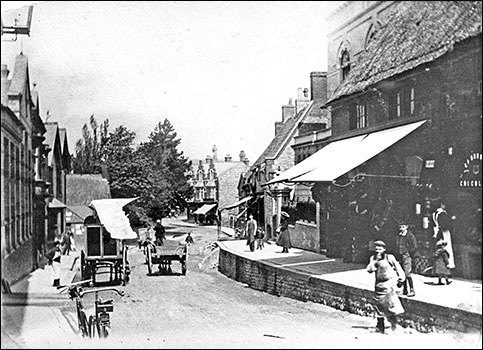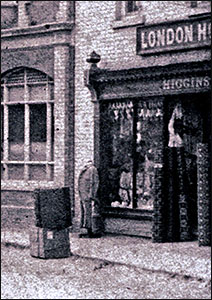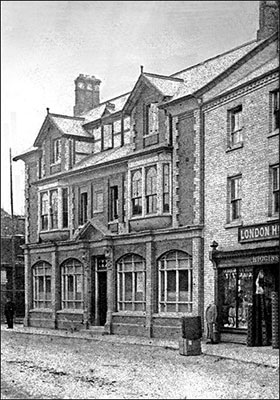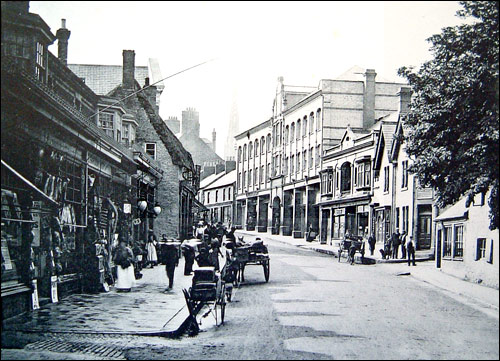|
|||||||||||||||||
|
High Street
|
|||||||||||||||||
|
Development of the Village into a Town
|
|||||||||||||||||
|
|||||||||||||||||
|
At the time of the Enclosure in 1779, Rushden was a farming community. Suppliers were given licences to sell goods, and many grew their own vegetables, baked bread, and kept a few hens. Those who couldn't provide for themselves were given parish relief through the Poor Law. If they were born elsewhere the Overseers of parish might try to send them back to the parish where they were born, and would seek a court order to remove them. In 1841 Rushden was still a mainly agriculutral village. It had grown up around the road, this being a main way from London to the North. It also followed for the most part, the brook or stream that ran through from the south, almost following the road of today (but now mostly culverted), through Rushden Hall Park, to Duck Street, and out through Spencer Park, and winding down to the river Nene at Ditchford. So Duck Street was the main thoroughfare, and sometime suffered floods. Development began with the shoetrade mechanisation of the 1850s, now needing factories. This brought in workers from the surrounding villages, so rapidly increasing the need to develop.
The High Street was ceated on land that had originally belonged to farms. The most northern end of the town was Mason's Farm, John Clark's Farm, Marriott's Farm, Laughton's, Denton's Farm was further along High Street, and Smith's Farm in High Street South. More farms were in Bedford Road, Wymington Road with a windmill close to the village boundary, Newton Road, and Wellingborough Road, where another windmill stood close by. Development was apace in the 1880s, and 1890s. The Denton family had been shoemaking, and John Cave & Sons had extended their factory following a fire in 1877, and a second extension in 1898 with six shops on High Street, Marriott's were now much involved in building work, and had moved to land further north, and the old farmhouse was now a school. A nursery was established by the rural postman and his son, and several of the farm barns were being put to other uses; the fire brigade keeping the fire hose and cart in one, Doctor Freeman had another, and Phillips opened their drapery in another.
High Street was not numbered until about 1895/8, so placing some buildings can be difficult without maps, like this one, that have names added. This photograph comes dated as 1895, and showing a tobacconist shop identified as being Henry Sharpe. He is known from trade directories have been in High Street between 1890 and 1894, but is not listed in 1898.
|
|||||||||||||||||
The shops were dotted in amongst the houses until gradually the houses were also converted into shops. Trade Directories also provide much information of the expansion. Many of those early buildings still survive, and although the ground floor frontages have changed, a look upwards shows their origins. |
|||||||||||||||||
|
|
|||||||||||||||||
|
|
|||||||||||||||||
